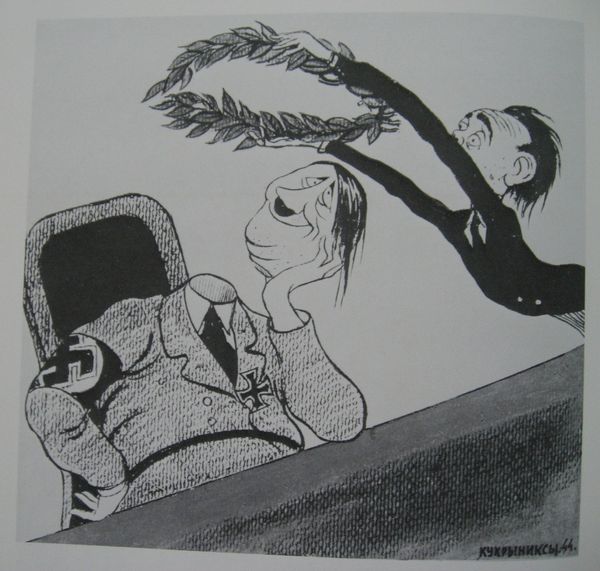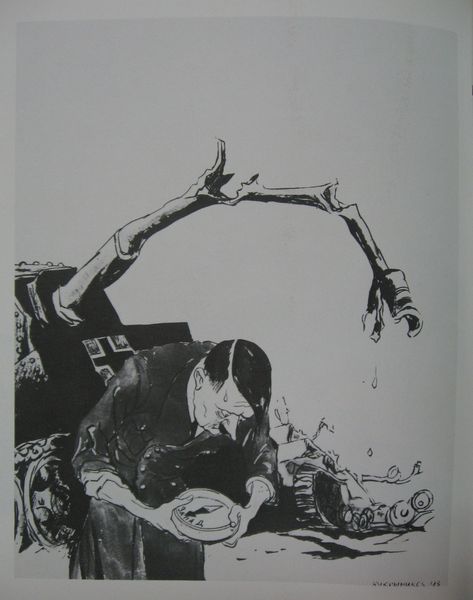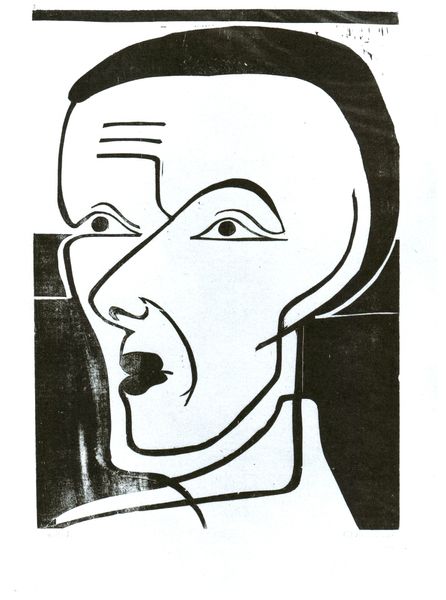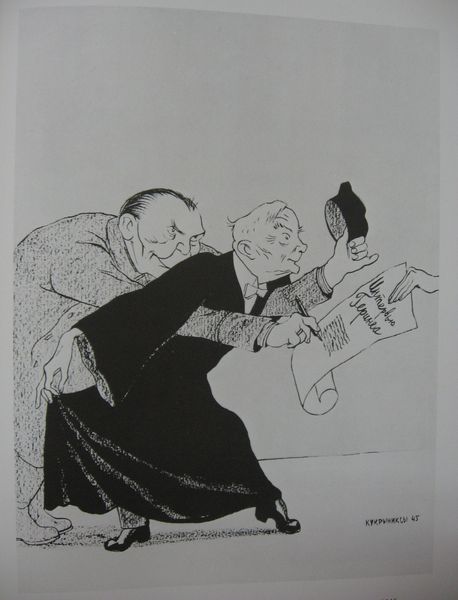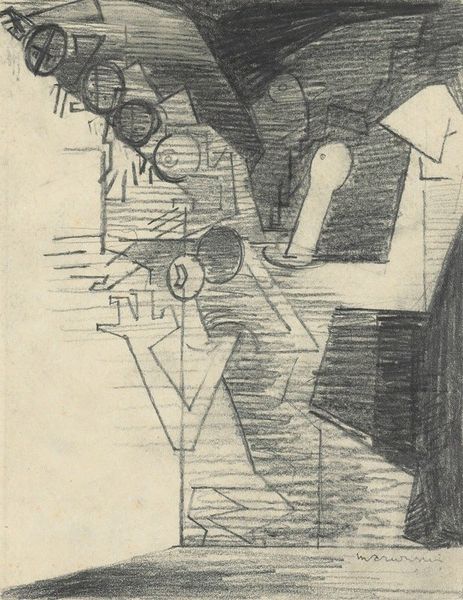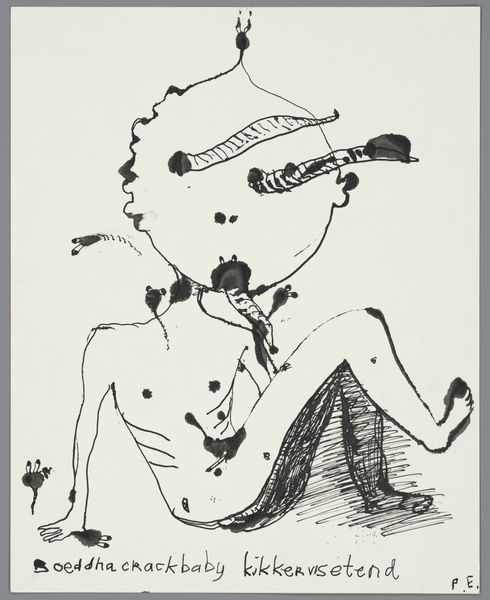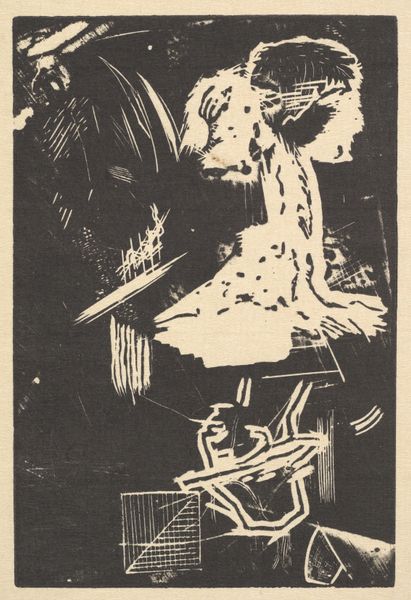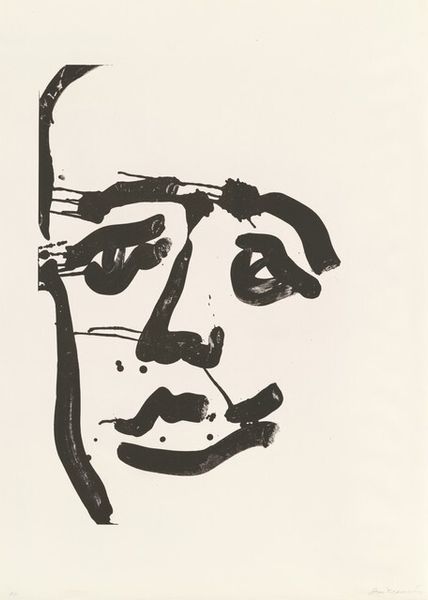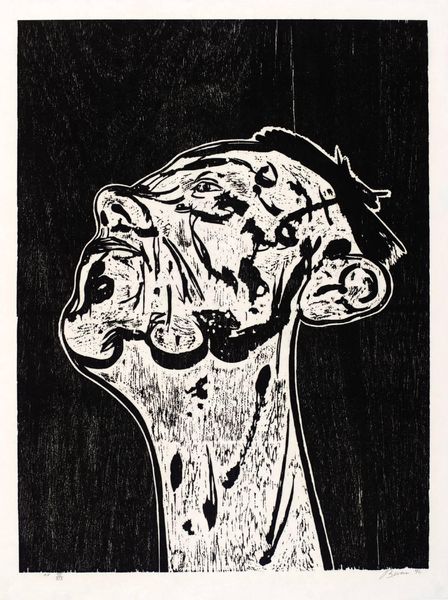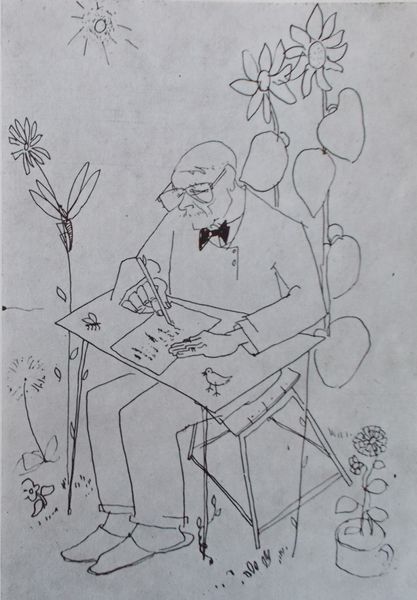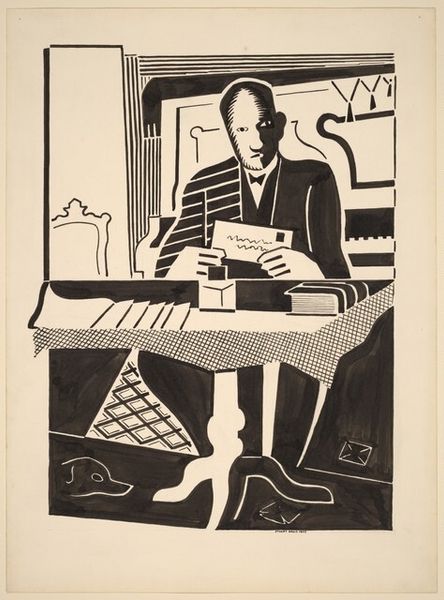
drawing, ink
#
portrait
#
drawing
#
caricature
#
social-realism
#
ink
#
male-portraits
Copyright: Kukryniksy,Fair Use
Curator: This untitled drawing by Kukryniksy from 1948 seems stark, almost unsettling at first glance. The ink creates sharp contrasts, and the subject appears quite severe. Editor: Yes, the heavy shadows definitely create a sense of unease, almost foreboding. There's something distinctly unwell about this figure, visually and perhaps even metaphorically. Tell me more about the piece itself. Curator: Well, it’s a caricature done in ink, part of the Soviet Social Realism movement. The piece skewers a lone male figure seated with various medical implements, as well as an apparent form that he is completing. Editor: Social Realism as a satirical mode is certainly interesting. It's critiquing from within a system. I’m struck by the contrast between the sterile medical environment and the palpable sense of anxiety the figure emanates. There’s also that shadow – a giant ear dripping some kind of fluid. Curator: The symbolism here is crucial. It engages the intersection of Soviet social policy and healthcare access after WWII, with the artist commenting on what appears to be either a feigned or, regardless, overly dramatized sense of personal illness. It could reflect skepticism towards those exploiting state provisions. Editor: The ear and the dripping liquid... could be construed as both surveillance and, perhaps, the draining of resources. There’s definitely an interplay of power dynamics here. Curator: Exactly. Kukryniksy were masters of using art to shape public opinion and convey a very specific message sanctioned by the state. The exaggerated features are meant to evoke contempt, maybe even ridicule, highlighting what was likely understood as parasitic behavior. Editor: So, it's a carefully constructed image functioning as social commentary, specifically engineered to enforce social norms of the time? Curator: Precisely. By understanding the socio-political framework of post-war Soviet society, we see beyond the visual severity, and recognize the artwork as a powerful tool in maintaining a specific ideological narrative. Editor: Seeing the work within its social context really transforms my understanding from that initial unsettling feeling to recognizing it as a tool of state control.
Comments
No comments
Be the first to comment and join the conversation on the ultimate creative platform.
